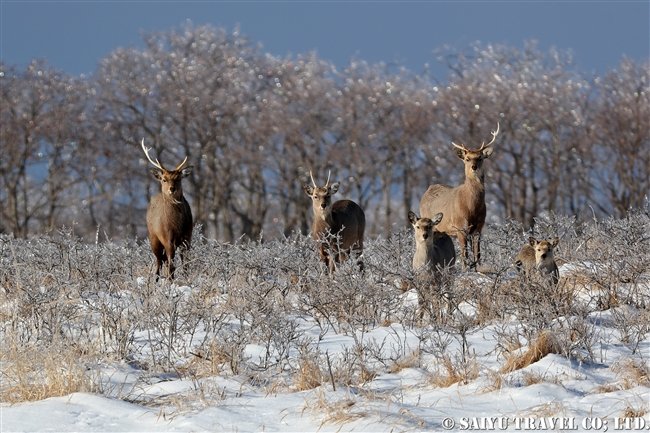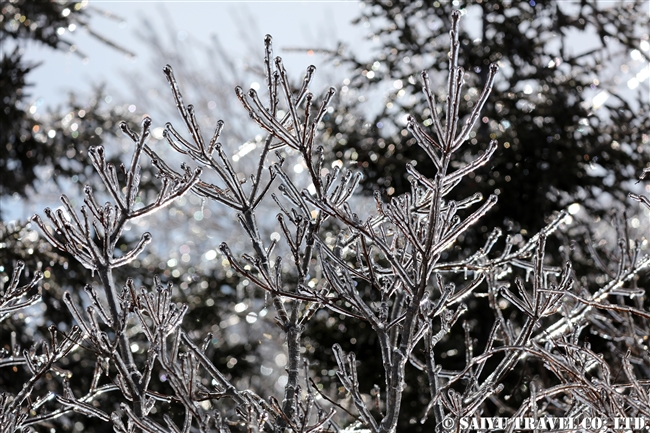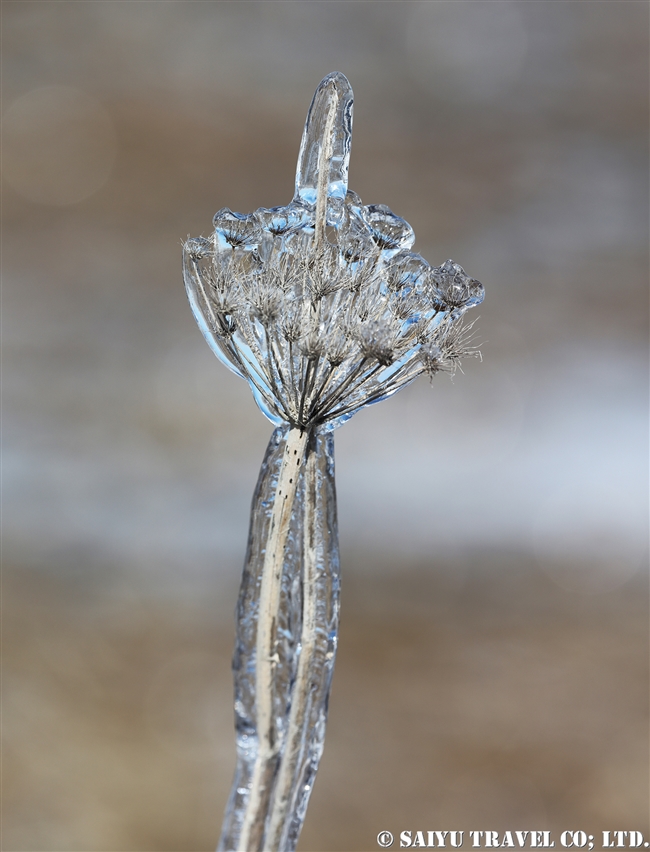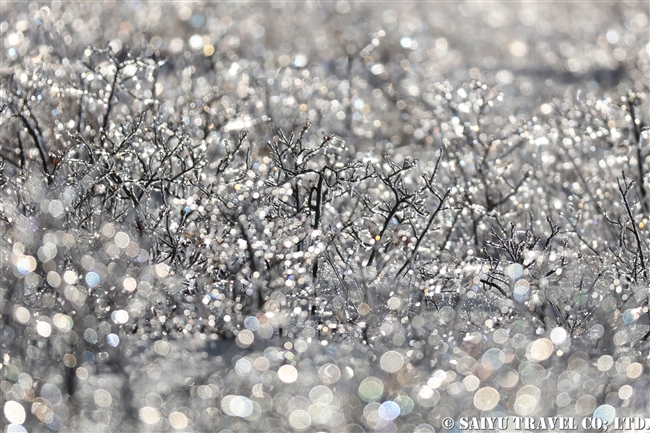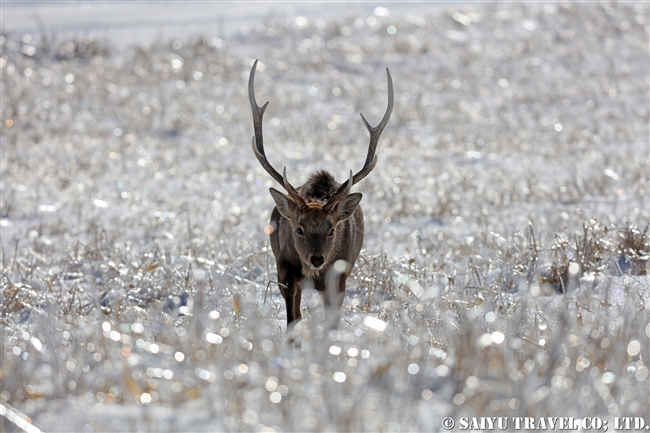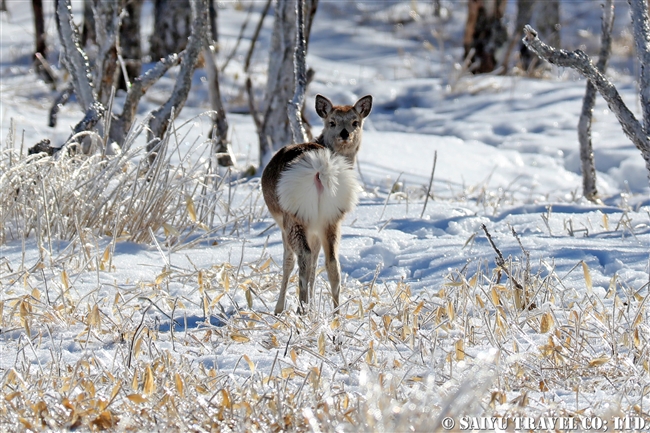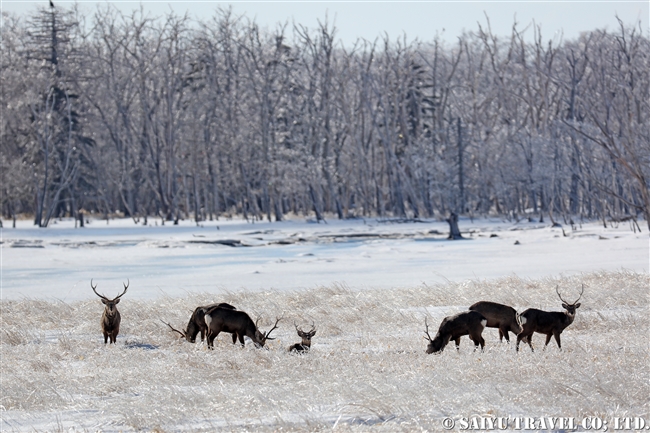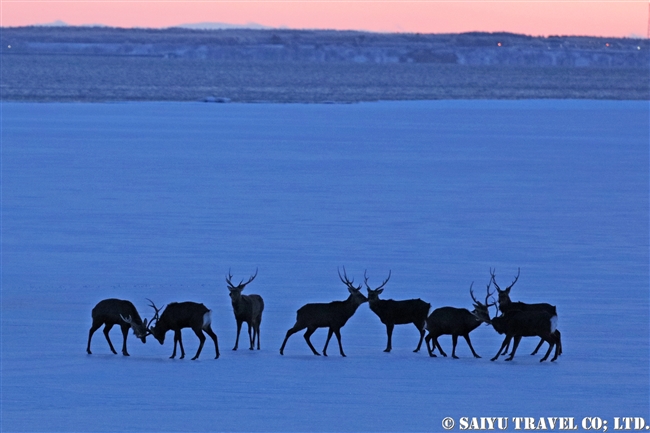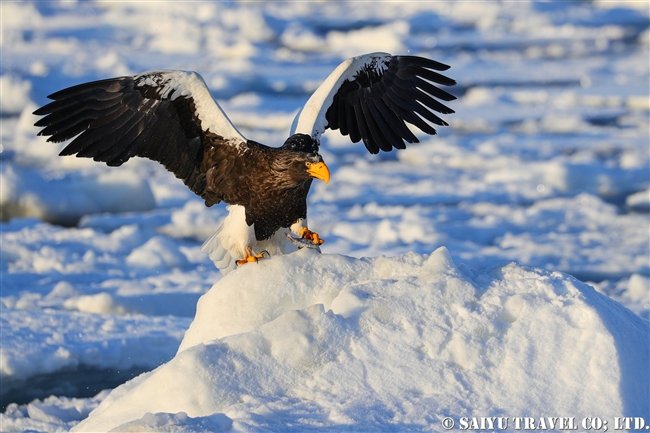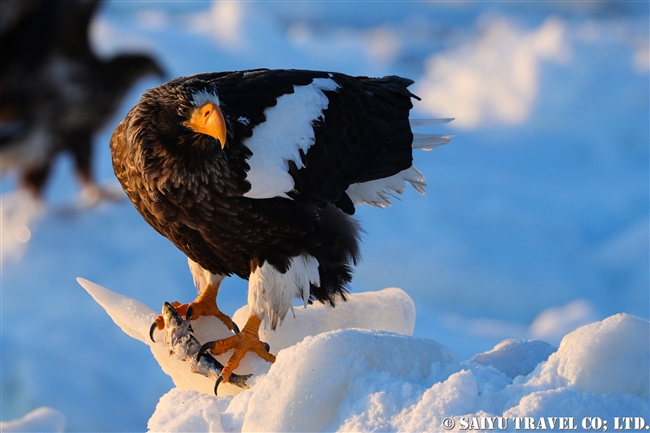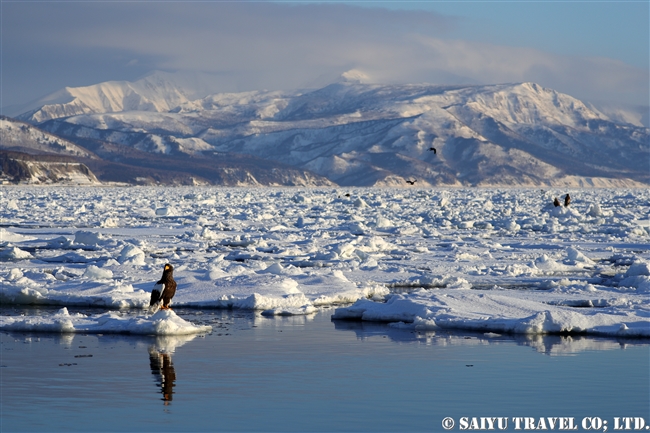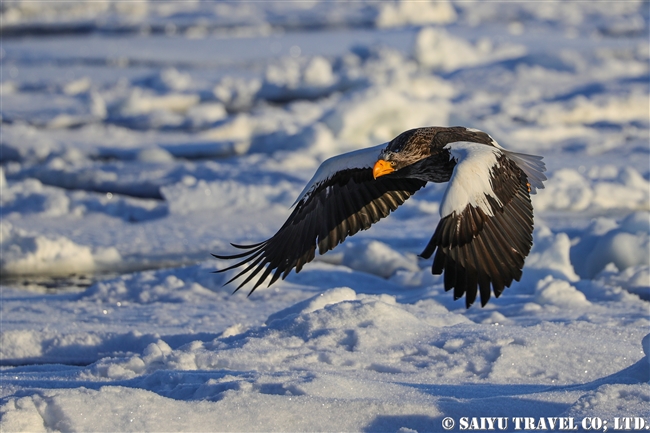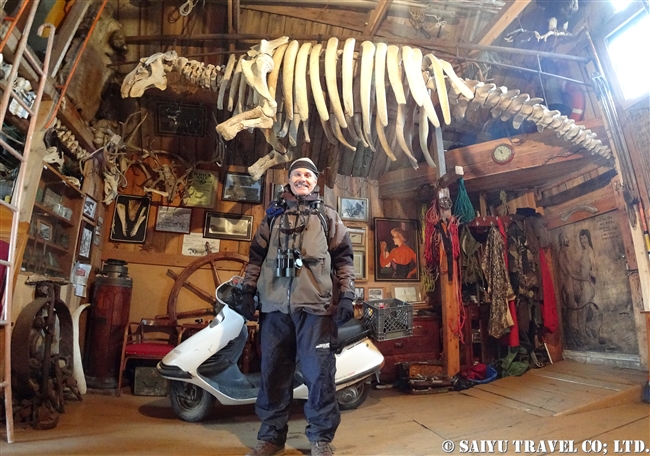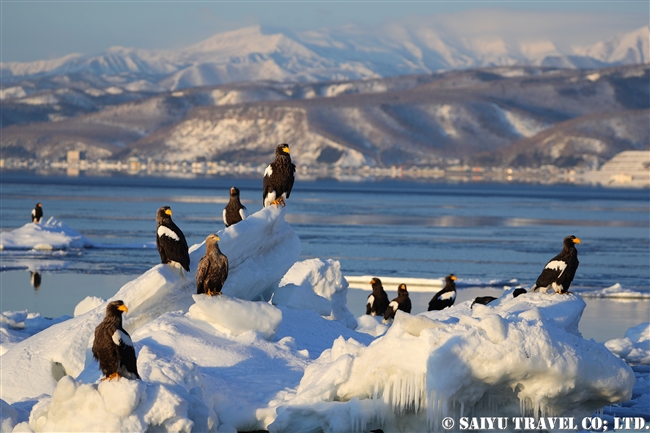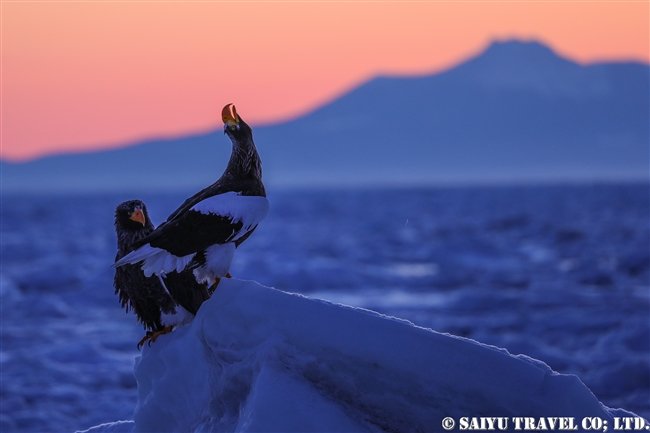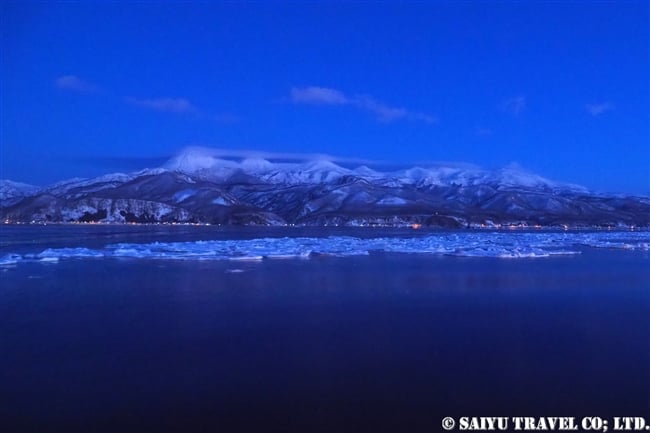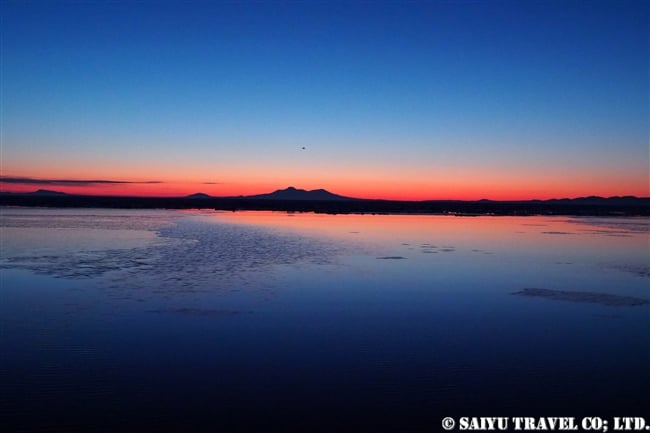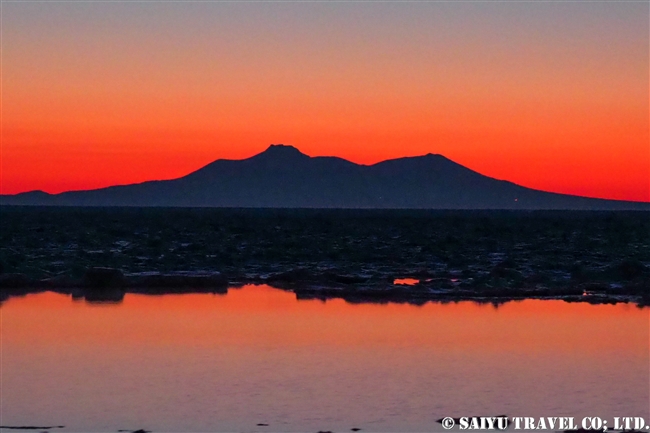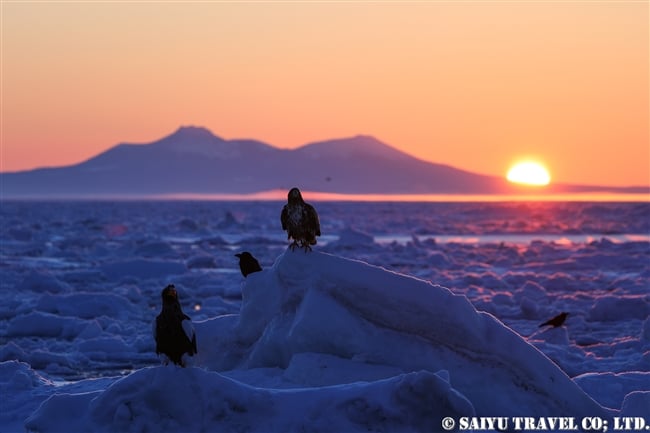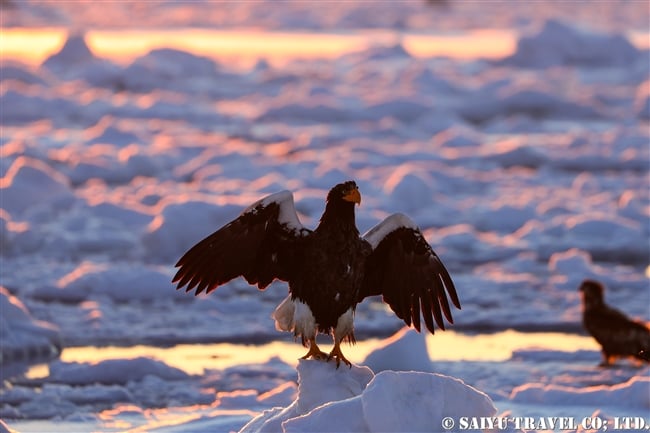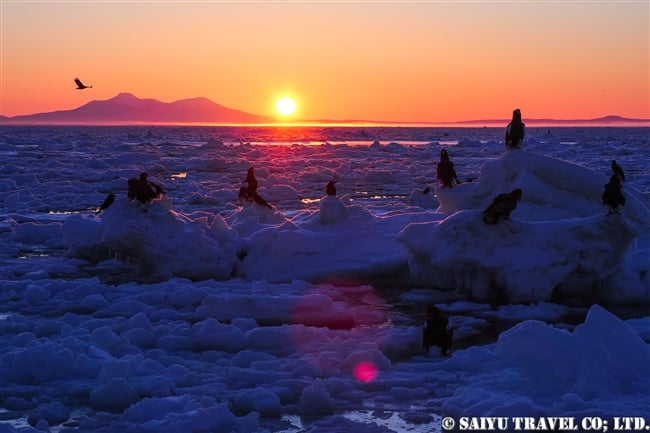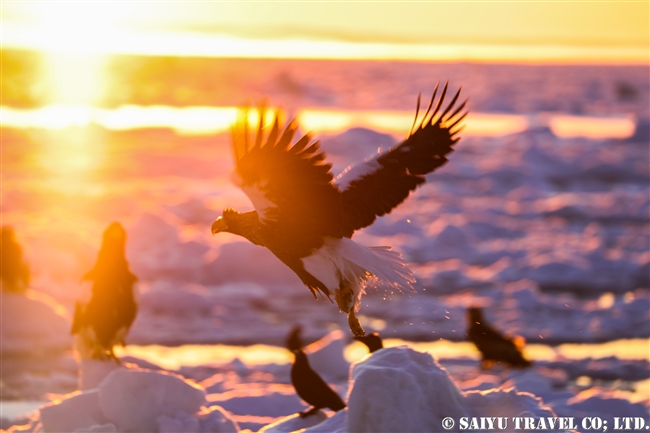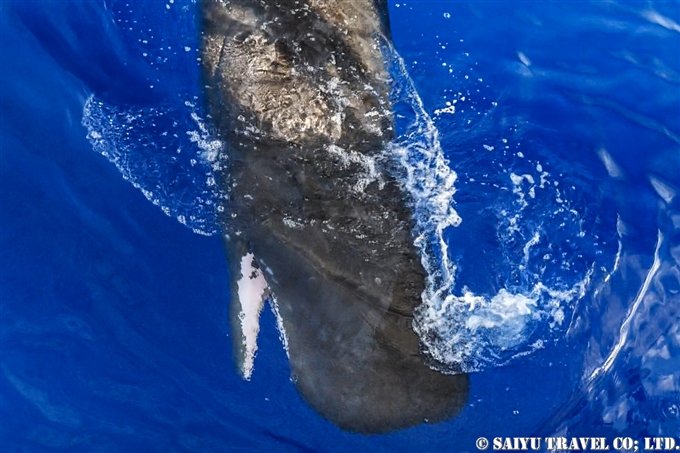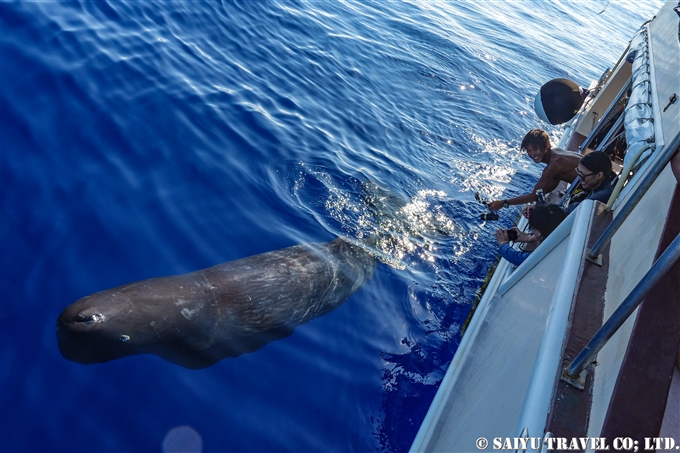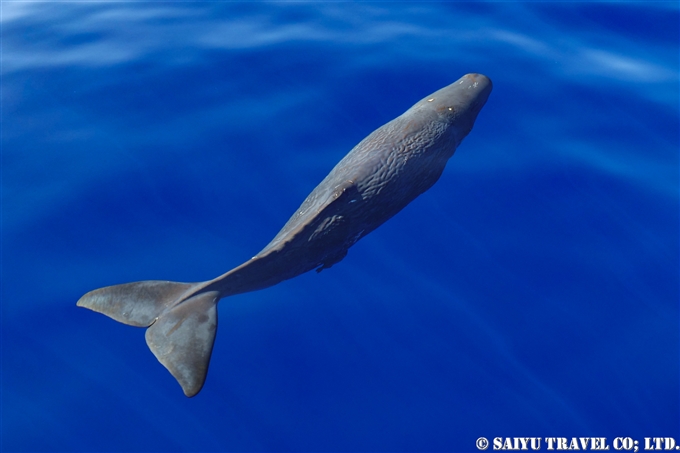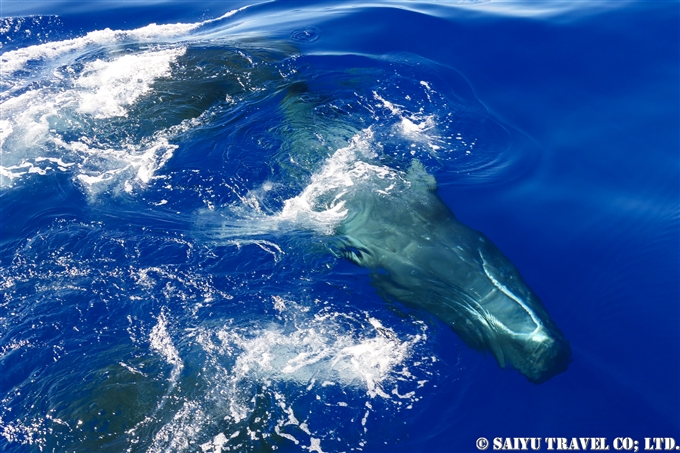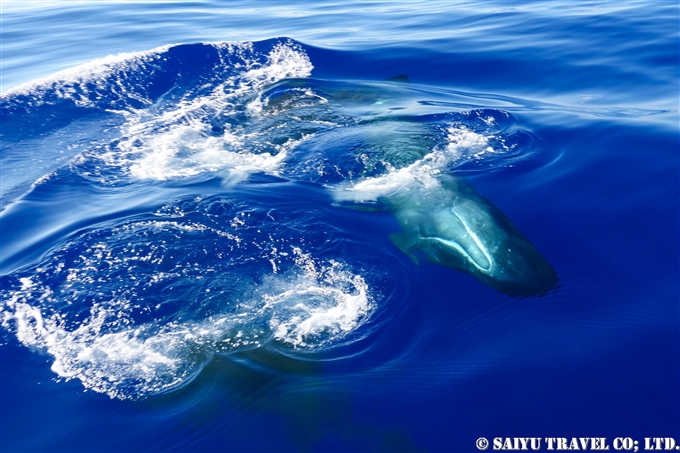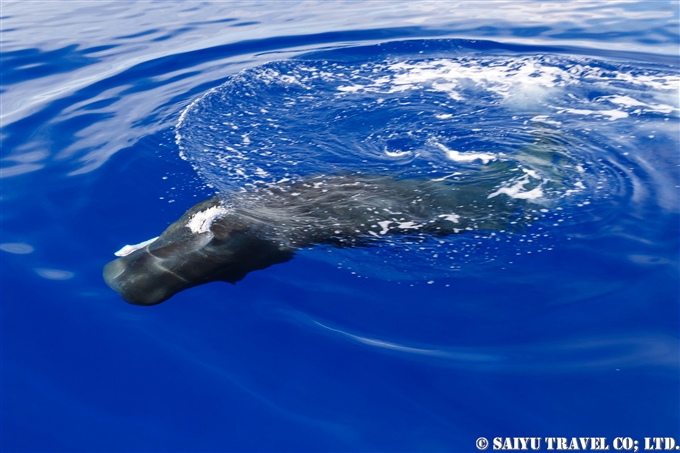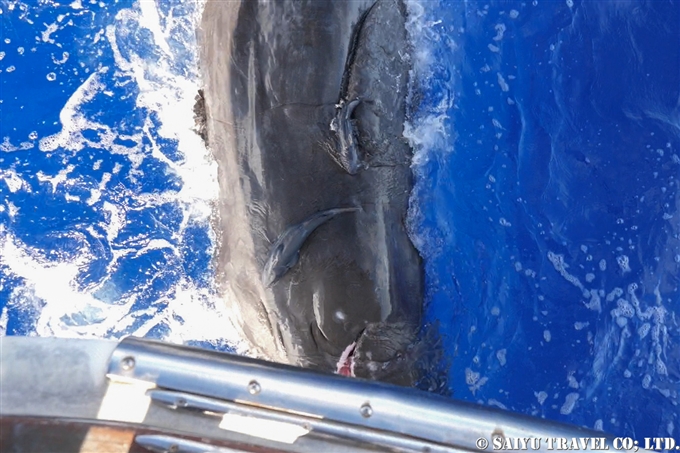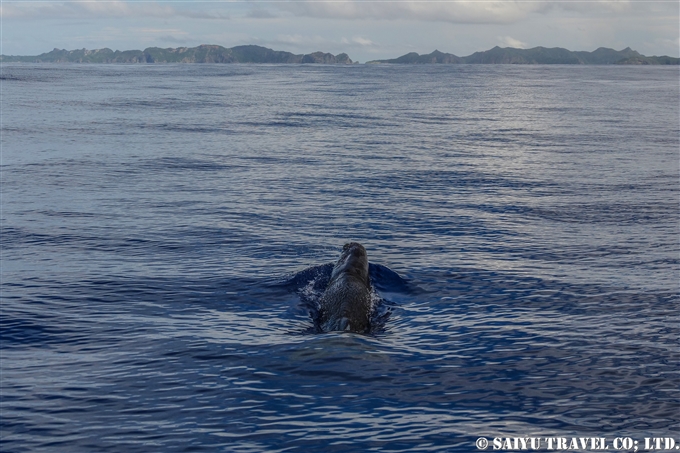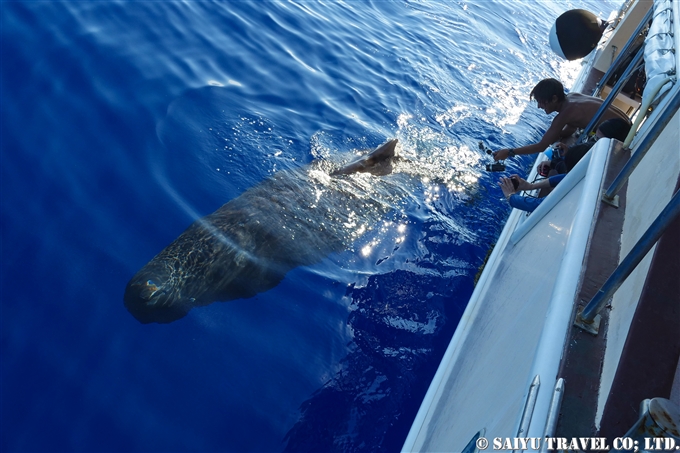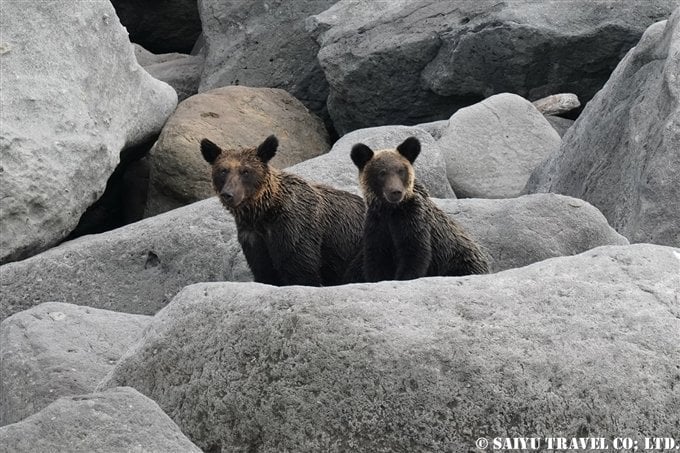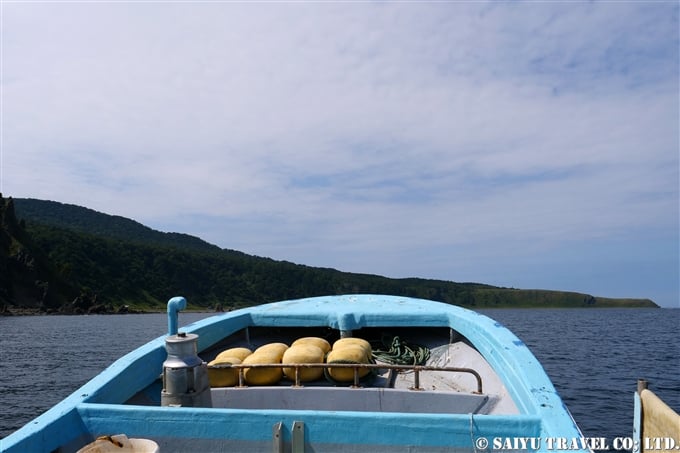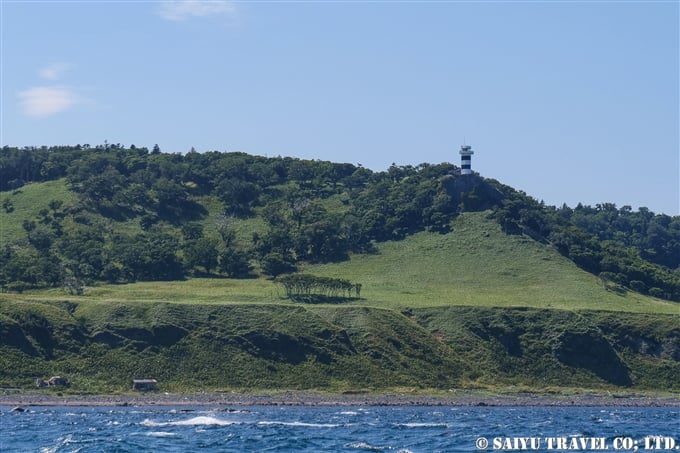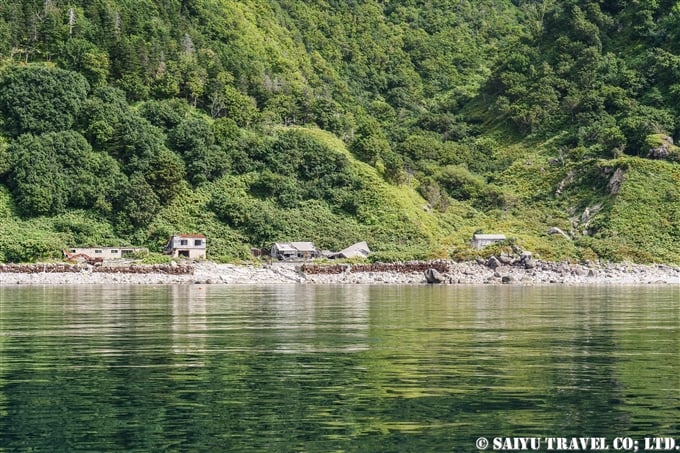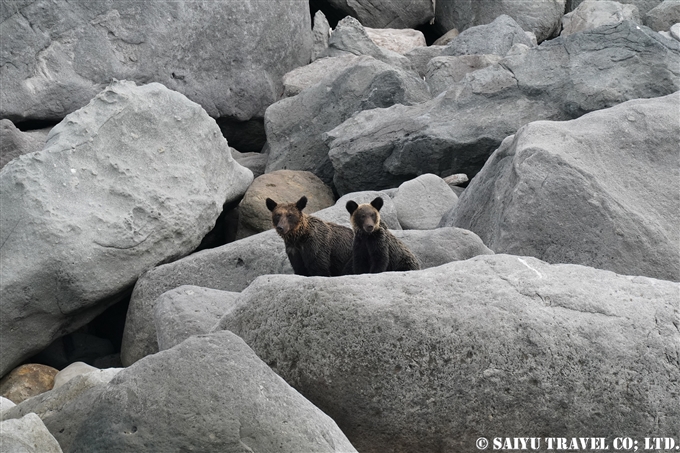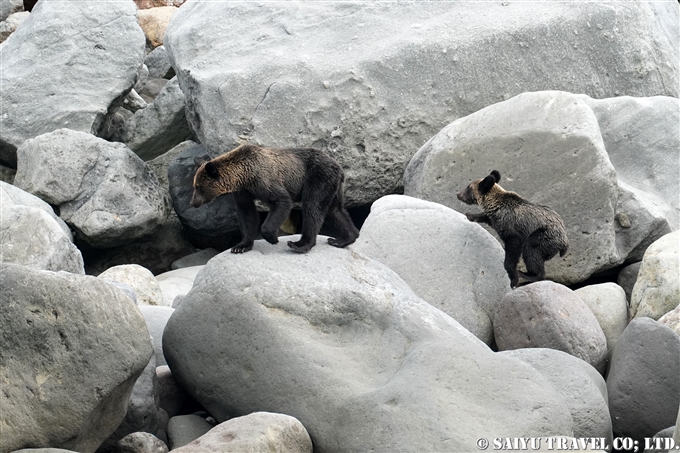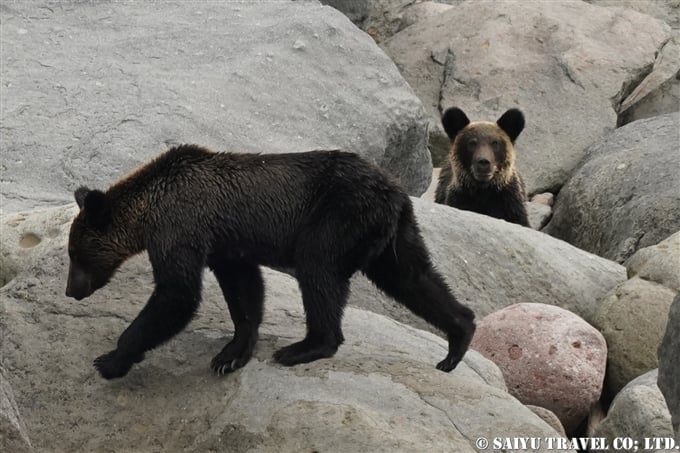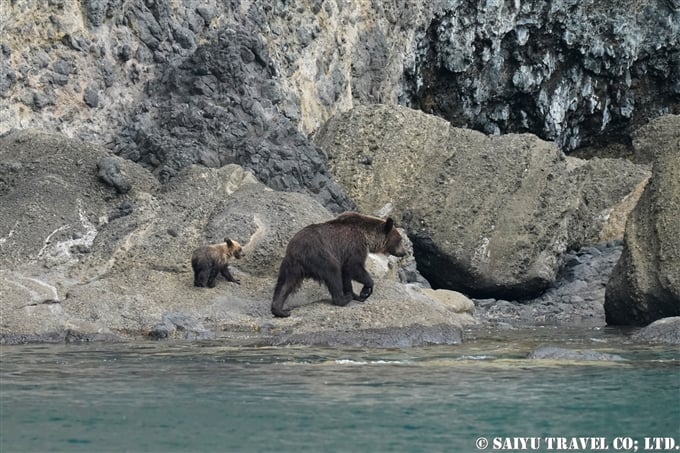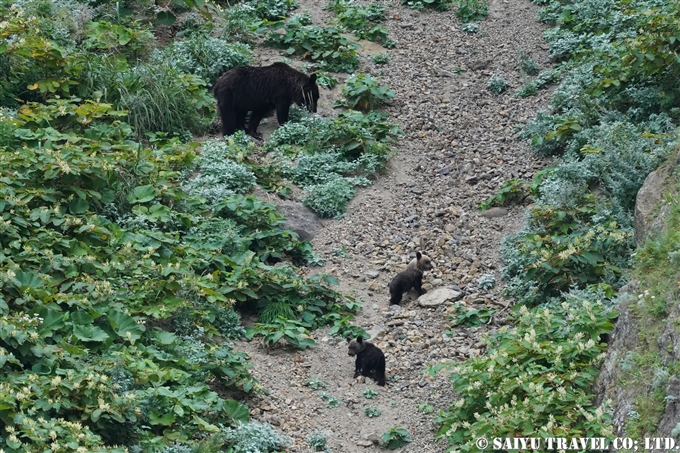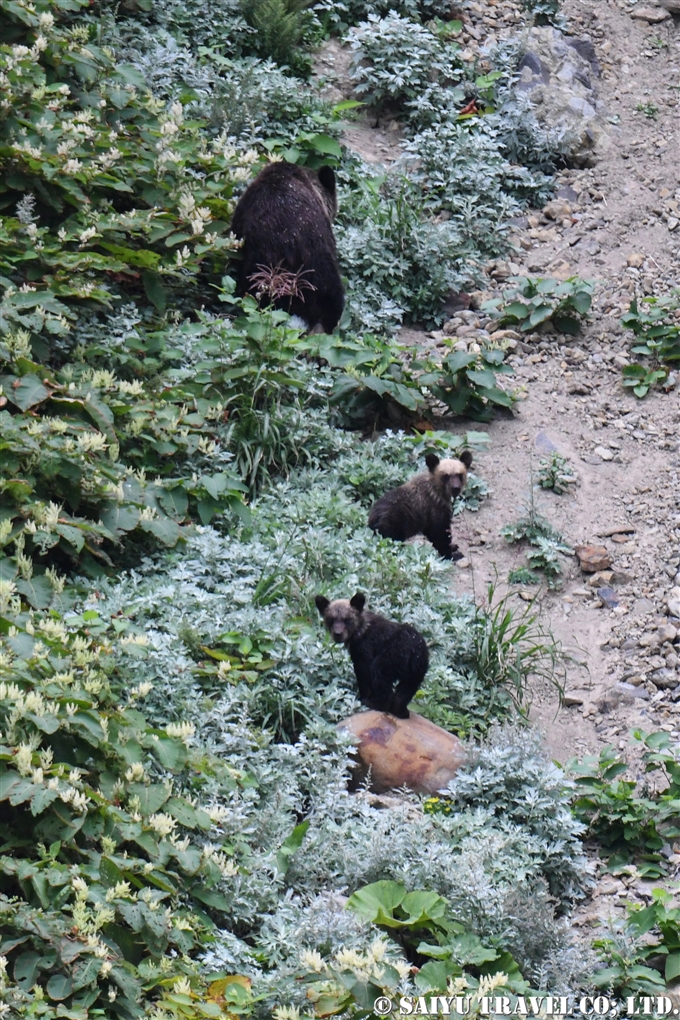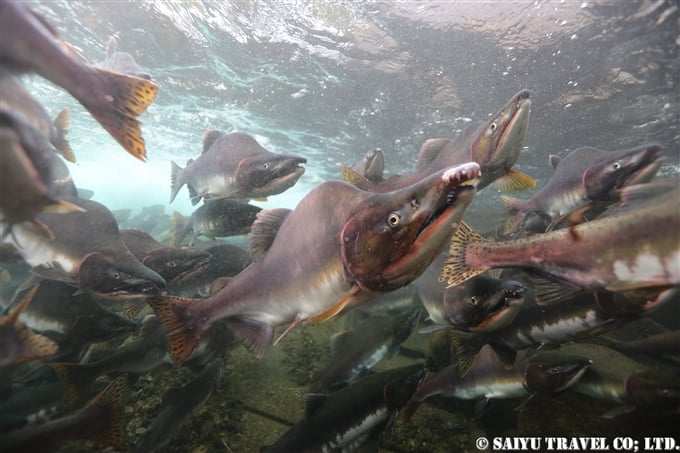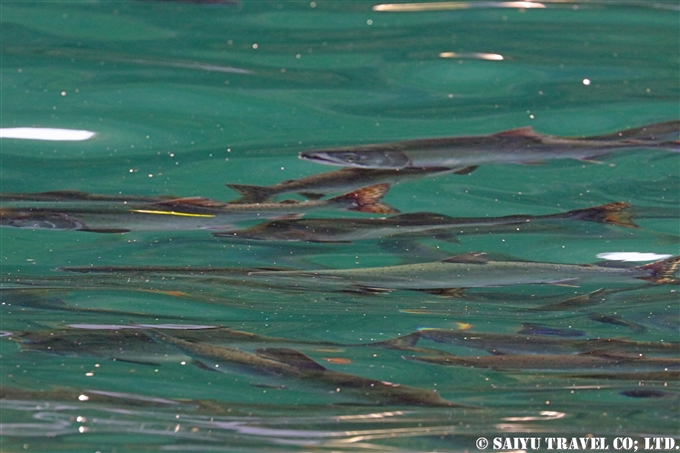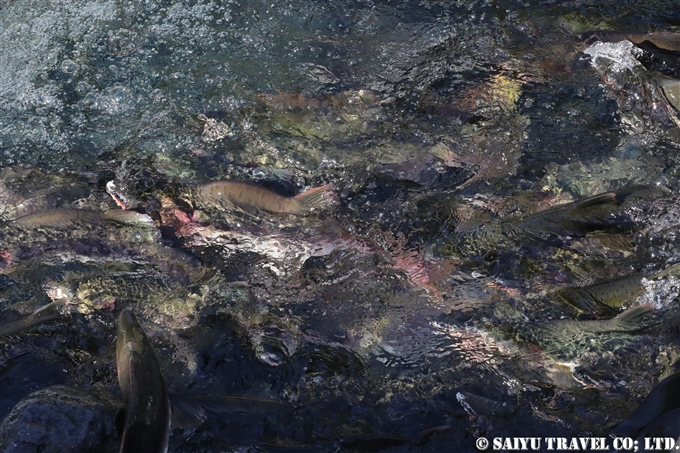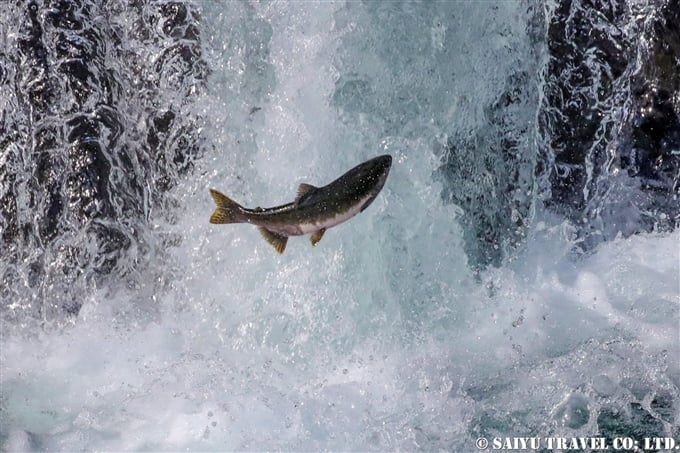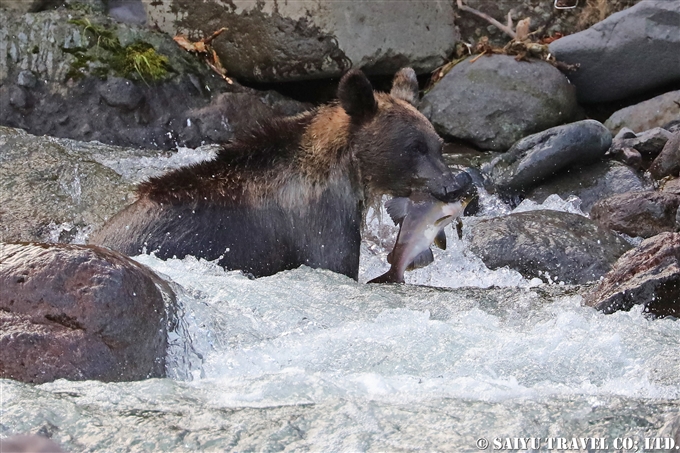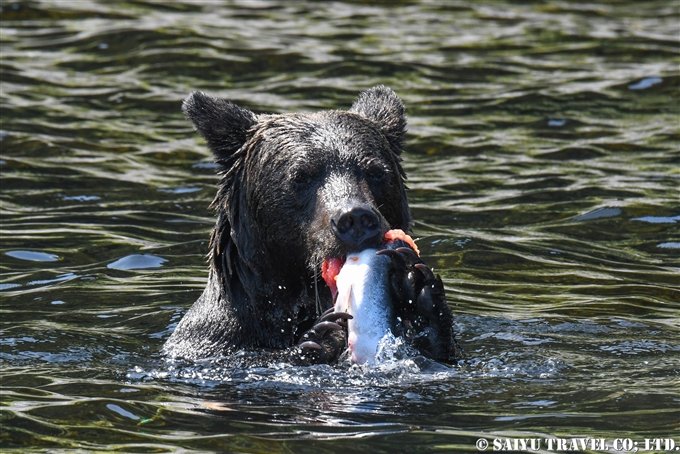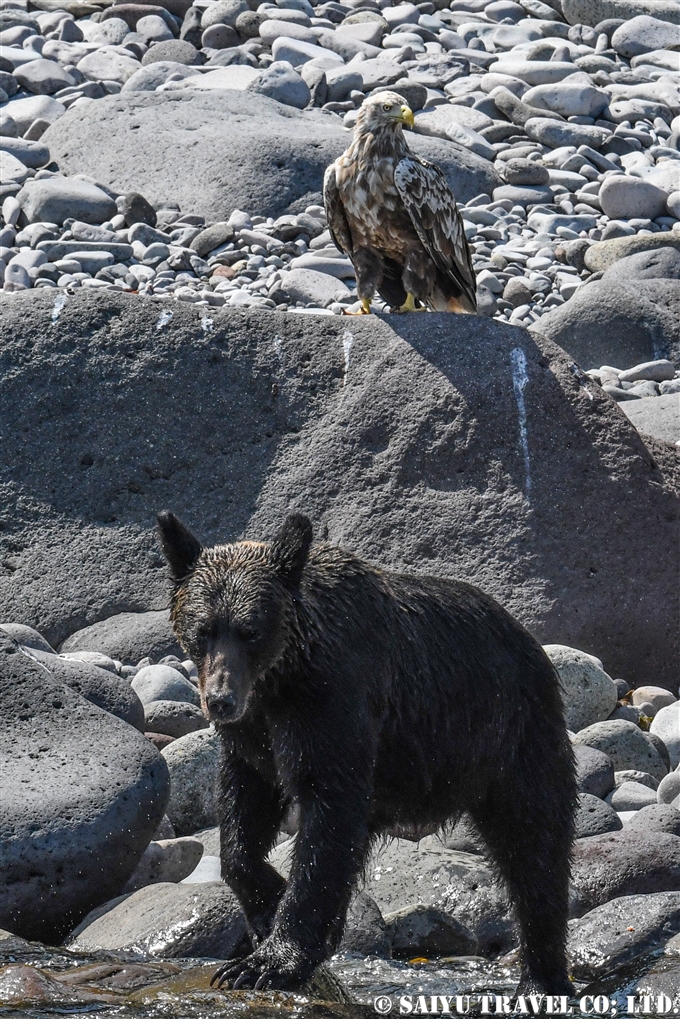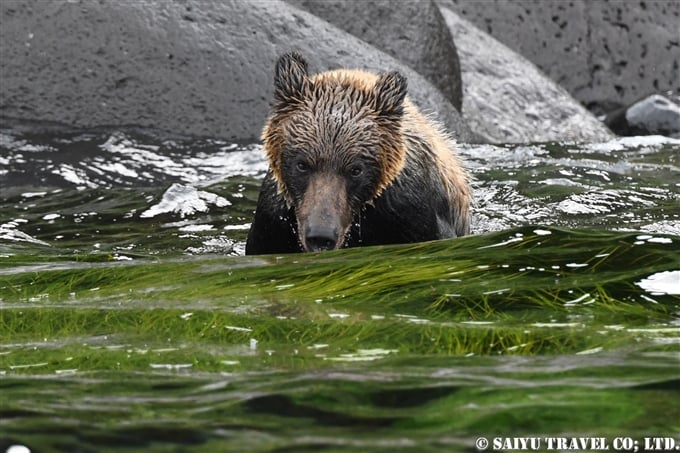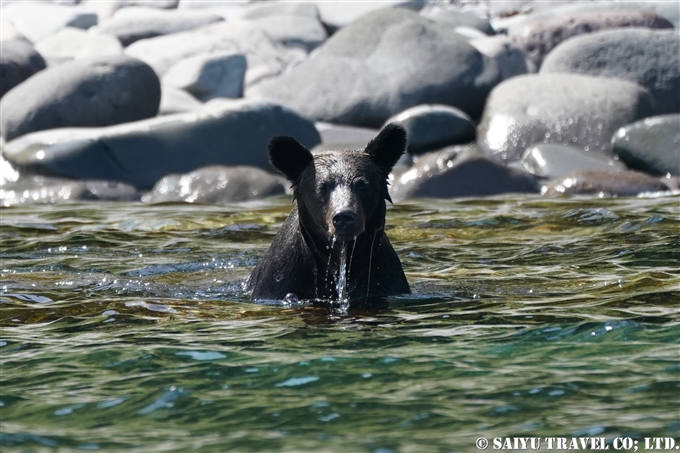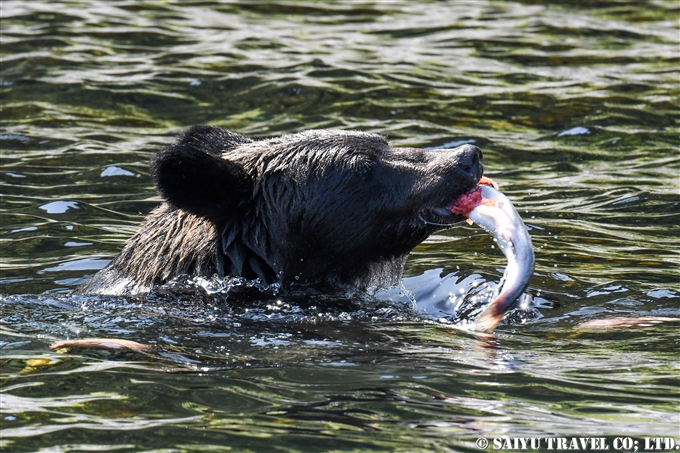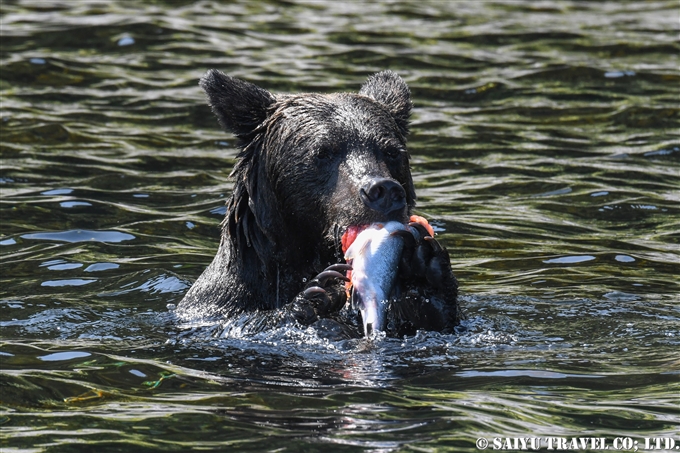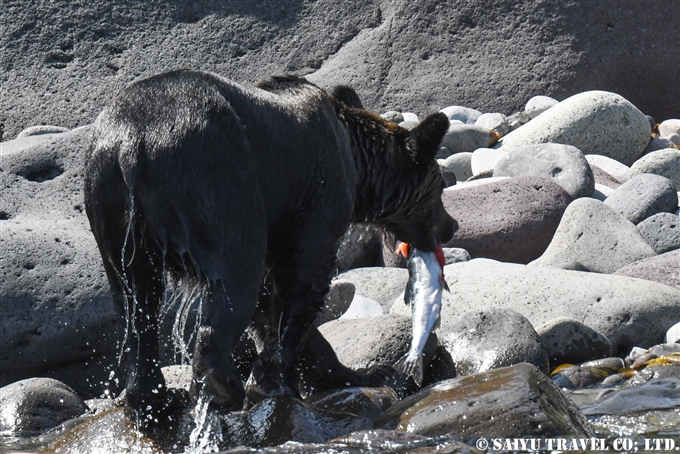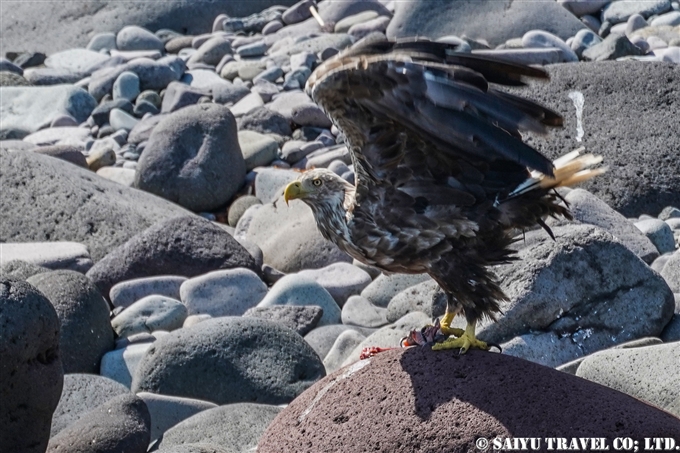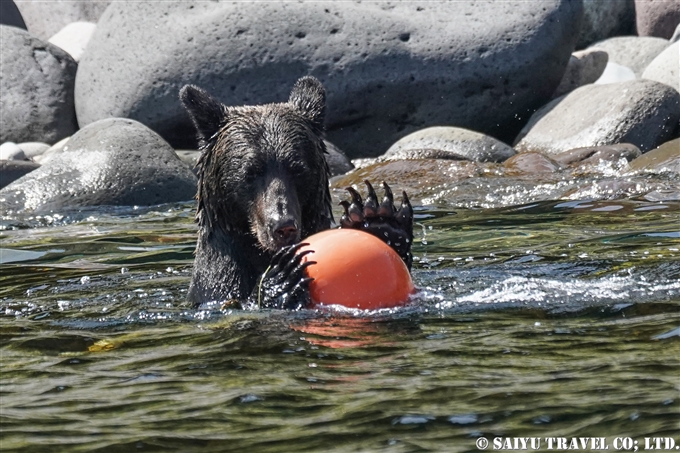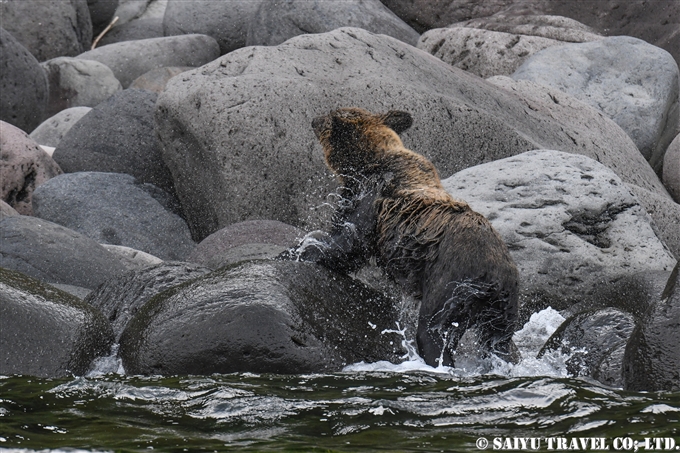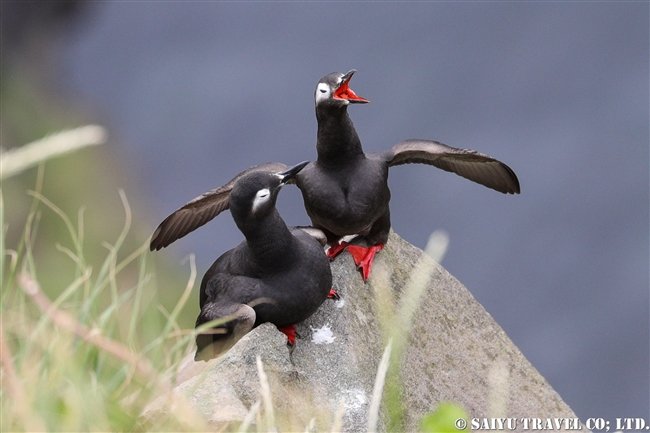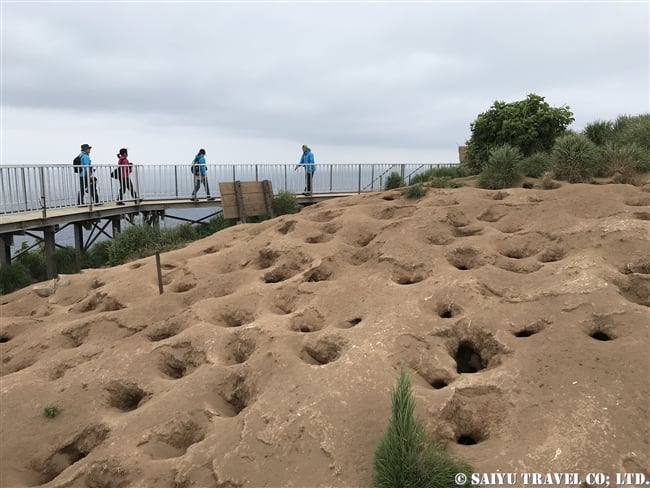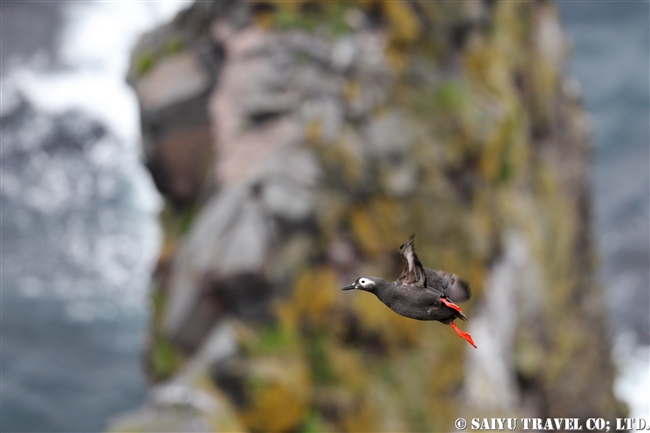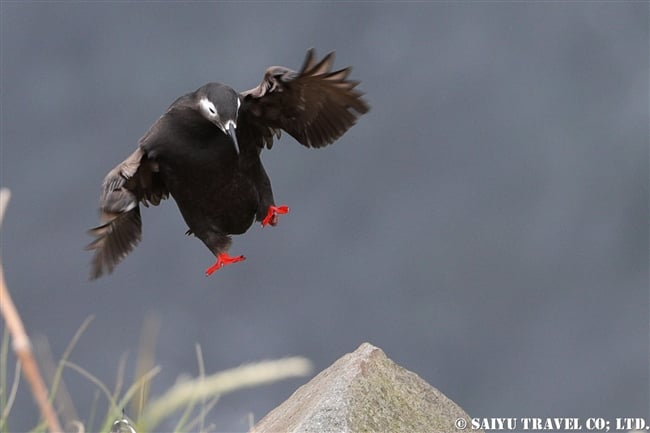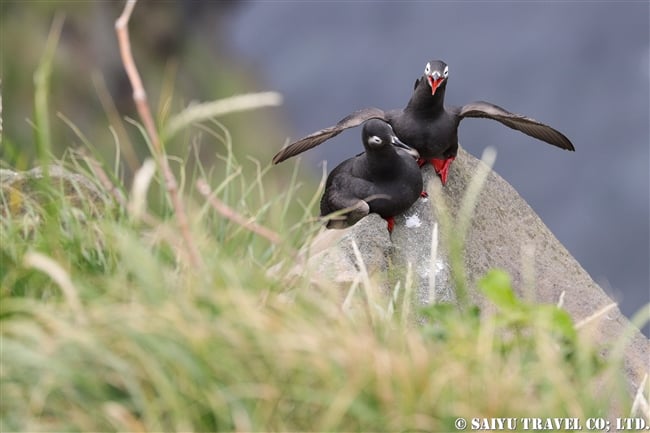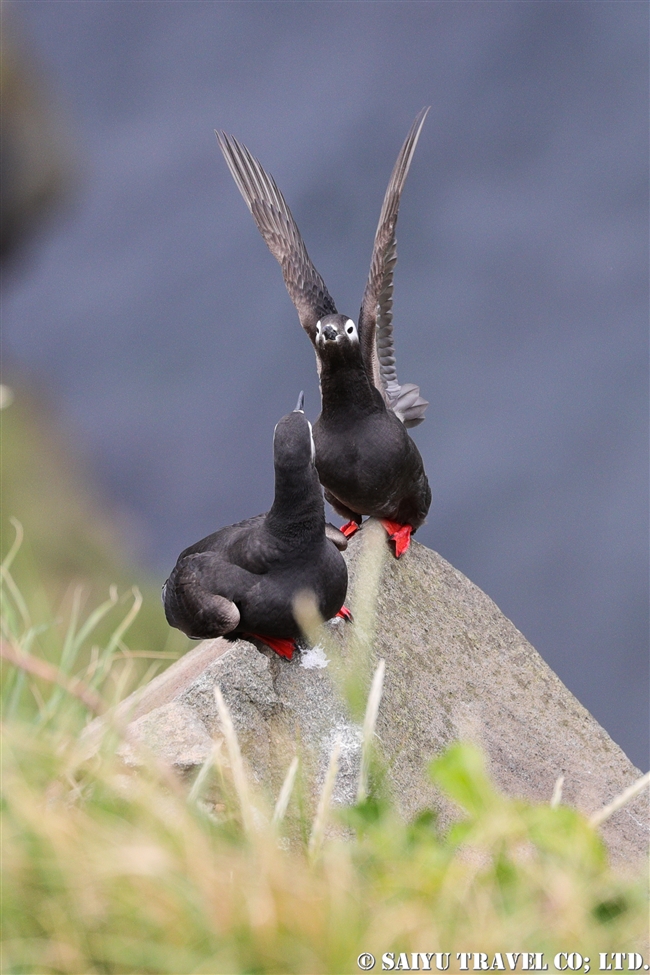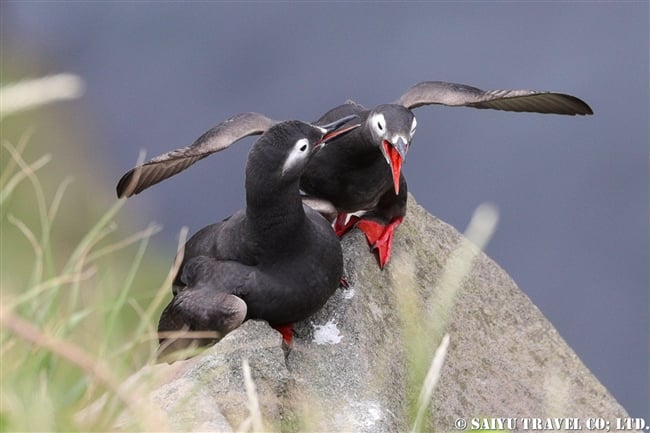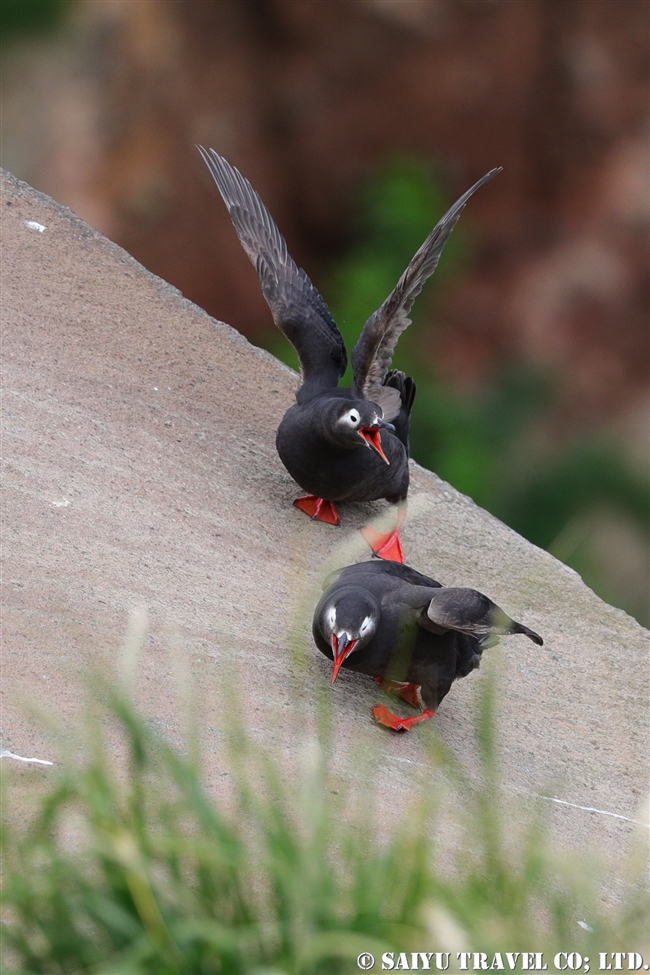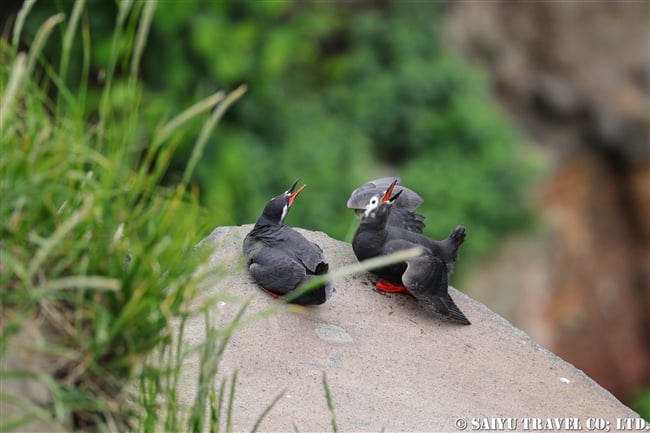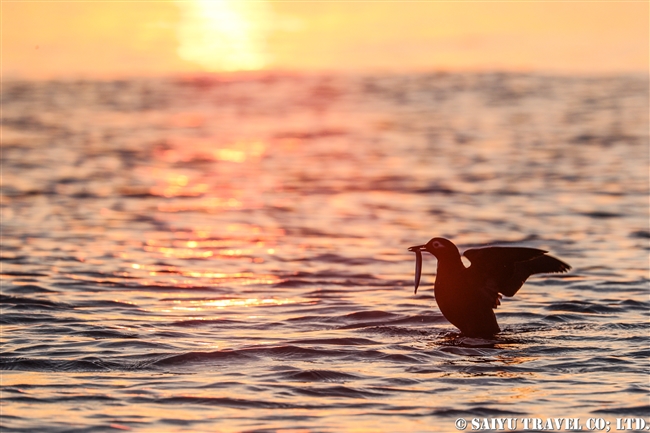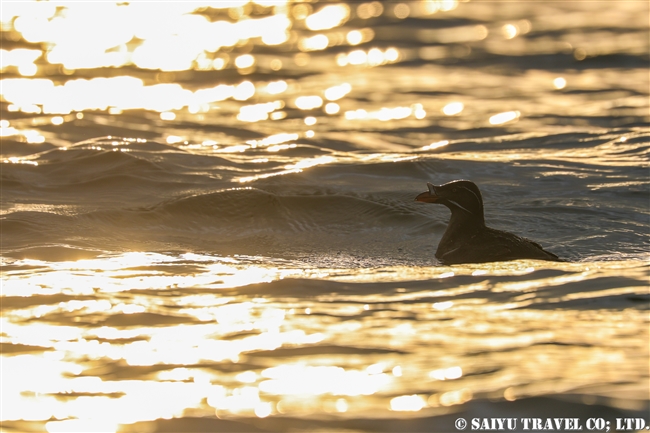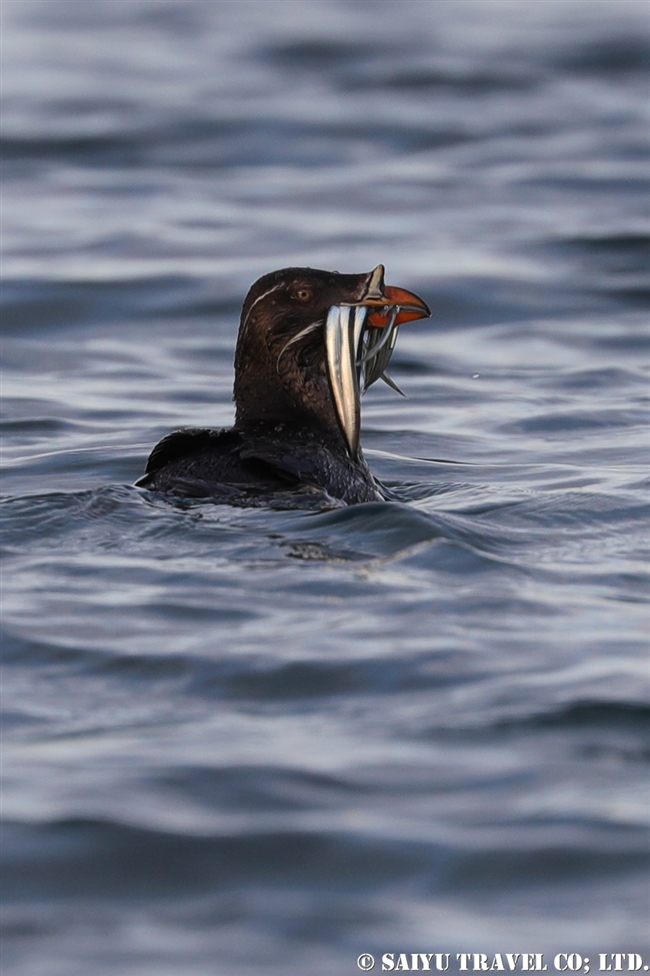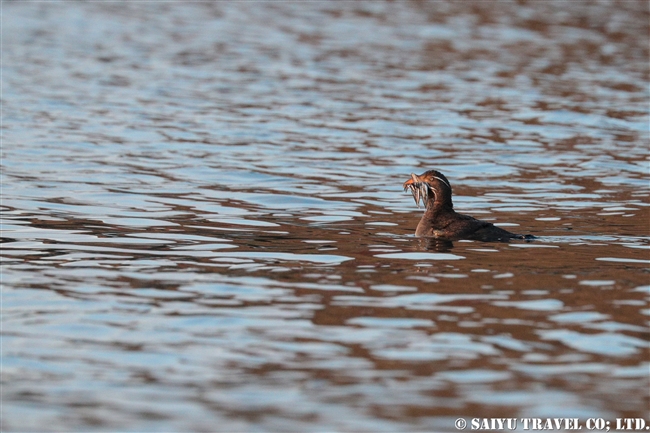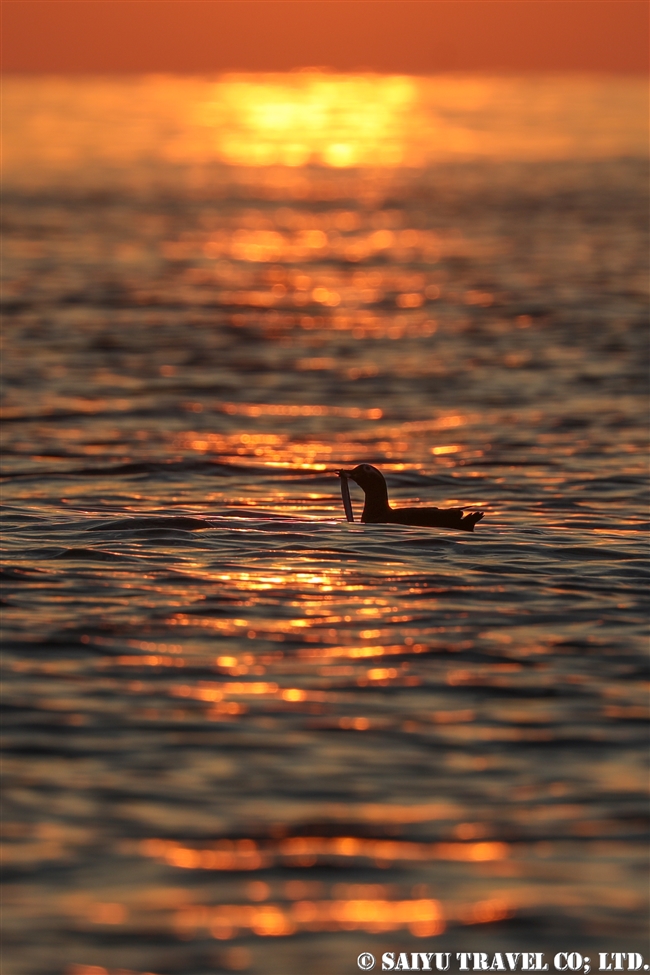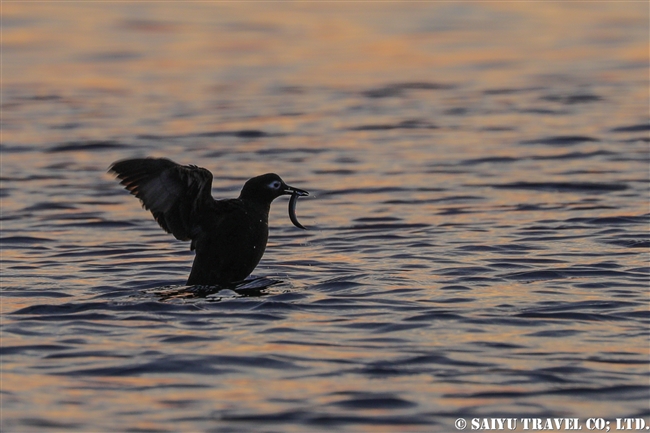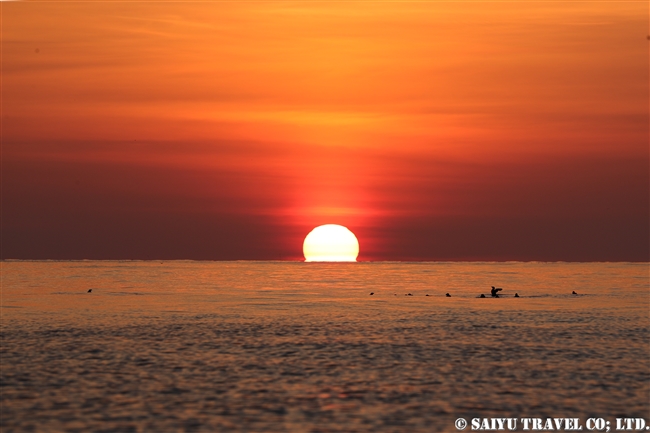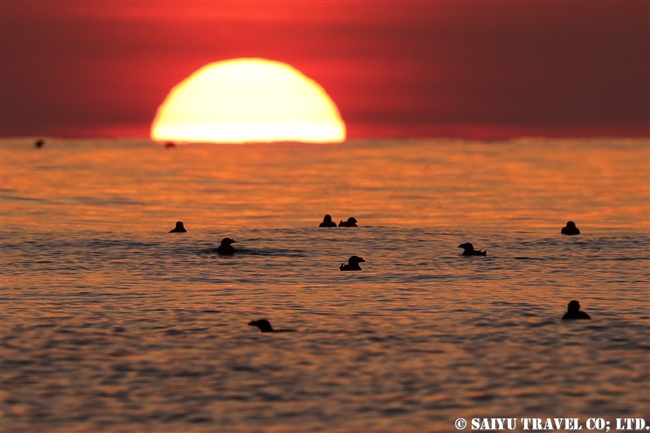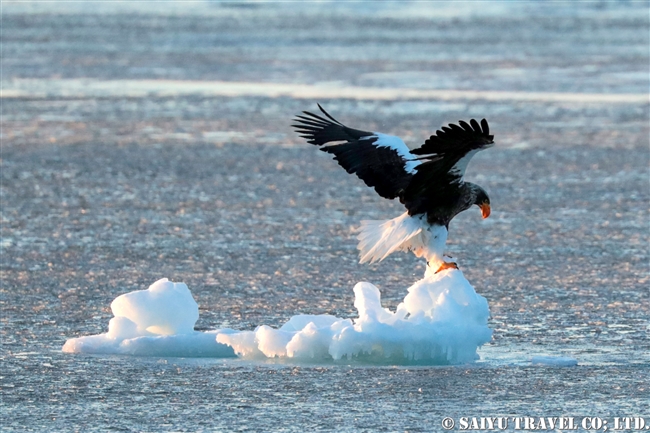
The Drift Ice Cruise of Rausu, Hokkaido. This year the drift ice arrived in Rausu around mid-February. This is a photo from a Drift Ice Cruise on March 5. From the day before, it was windy, and the drift ice moved towards the cape on the Shiretoko Peninsula.
We had chartered our boat for the Saiyu Travel’s “Photography Tour of Eastern Hokkaido in Winter” and we headed to sea in our Boat “Ohwashi.” The captain told us, “The drift ice has moved quite a bit, but let’s go check it out. If we travel for about an hour, we will be able to see it probably.”
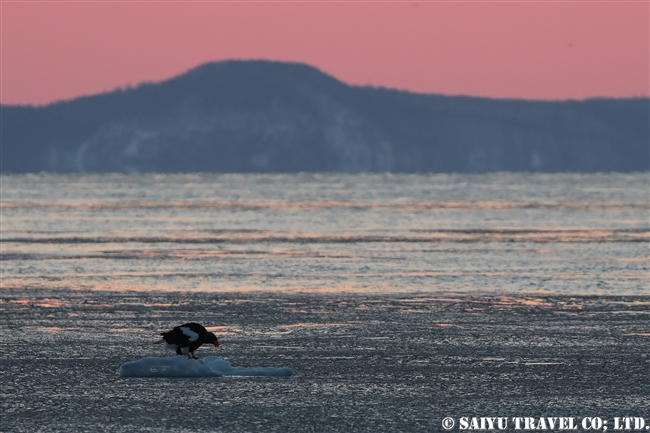
Just before daybreak, we could see Kunashiri Island (Northern Territory, an island effectively under Russia) we could see a Steller’s Sea Eagle on the ice.
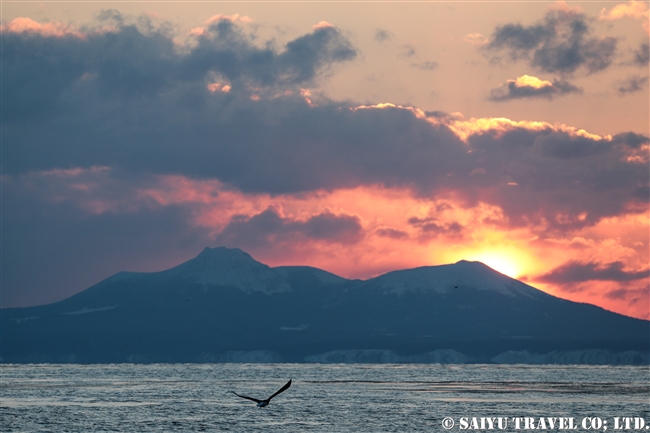
It’s Daybreak.
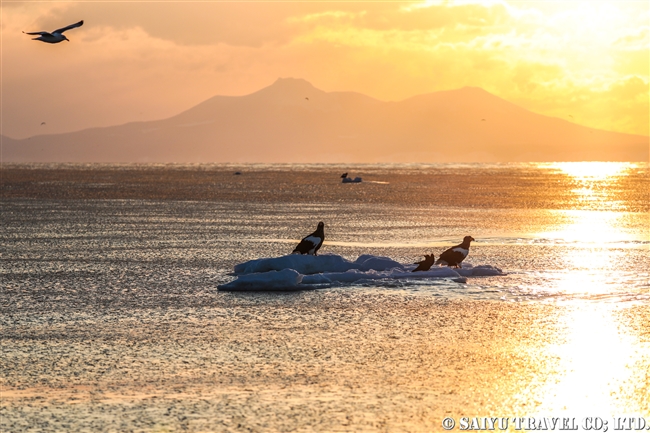
Sunrise with Kunashiri Island, the ice, and Sea eagles. The morning in Rausu is so breathtaking.
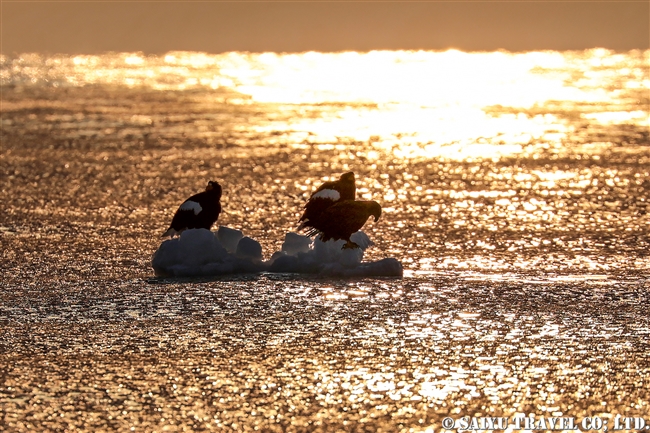
The surface of the sea had shards of ice floating and reflecting the sun like pieces of glass.
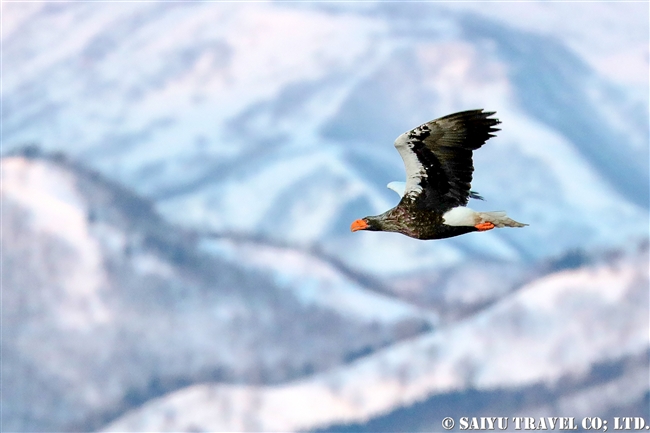
The mountains of Shiretoko as a backdrop to the Steller’s Sea Eagle.

The Sea eagle flying to the sea.
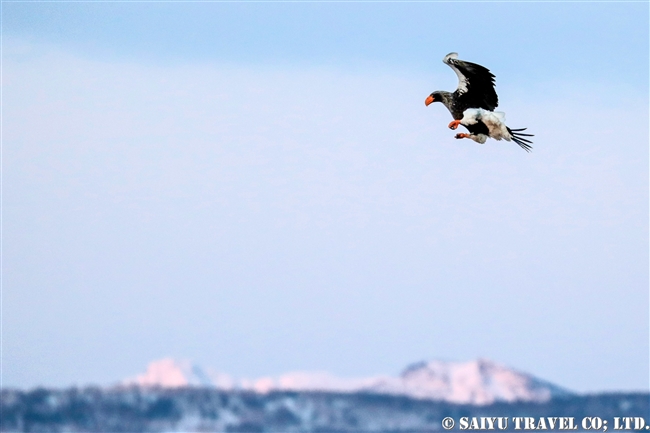
The sea eagle locked on to a fish.
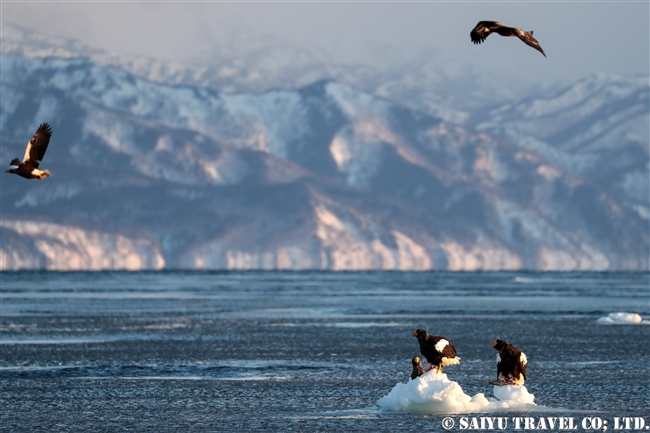
The Sea eagles hitch a ride on the floating drift ice off the coast of Rausu.
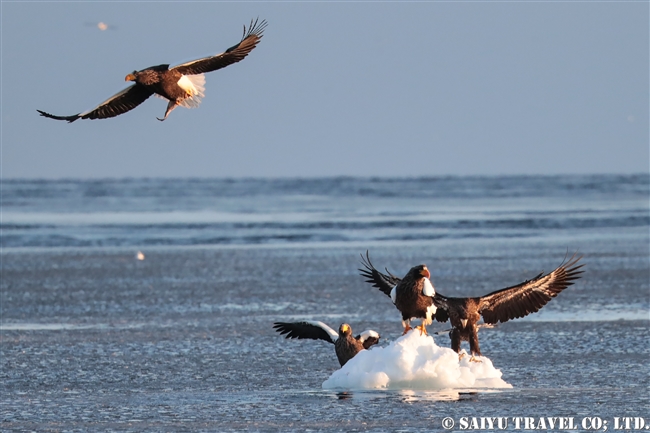
Once a Sea eagle catches a fish that is thrown from the boat, it flies away. Then another bird will appear to fill the vacant spot.
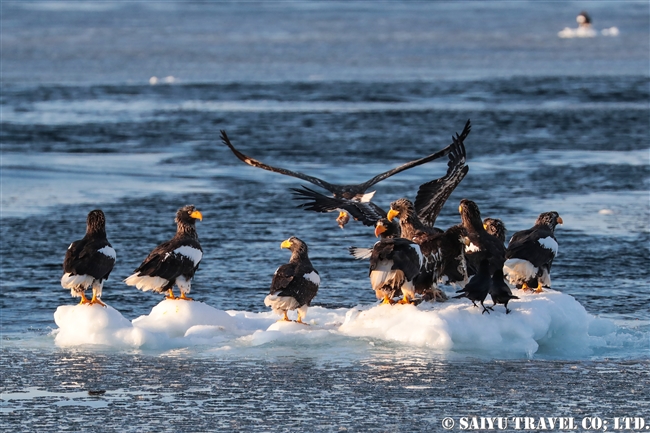
The remaining bits of drift ice offer a precious place for rest, and they are competing for space on it.
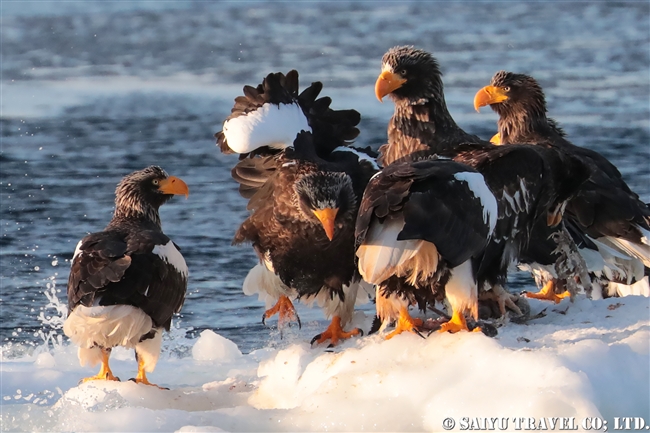
The Steller’s sea eagles eating their fish on the drift ice.
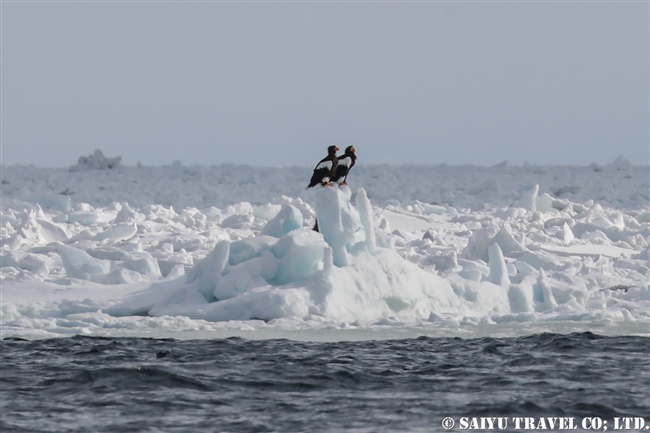
Our boat ran to the Cape Shiretoko and we could finally see the massive drift ice collected there! Steller’s sea eagles were also sitting there as well!
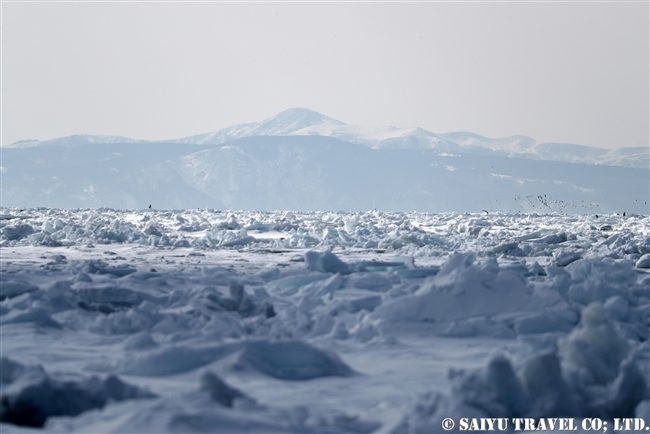
From here on, there is nothing but drift ice. It looks like maybe it continues all the way to Kunashiri Island.
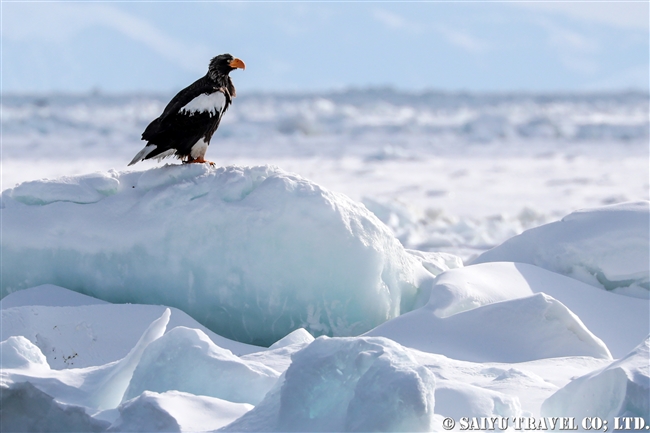
A Stellter’s sea eagle on the drift ice. Then, we heard from the captain, that the wind and waves were getting stronger, so we will turn back here.
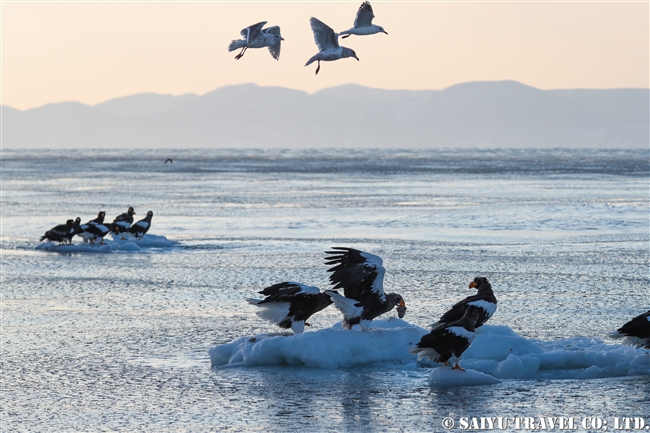
The sea of Rausu in the early morning. It was a spectacular time with the Steller’s sea eagles and gulls doing their dance on the drift ice.
Photo & Text: Mariko SAWADA
Observation: March 2017, Rausu, Shiretoko Peninsula, Hokkaido
Special Thanks: Captain of the Ohwashi, Mr. KAWABATA and the crew
*Contact us, Saiyu Travel for more information about wildlife and bird watching in Hokkaido. We can make various arrangements for your trip. We have a guesthouse, Shiretoko Serai, in Rausu, Shiretoko Peninsula.
Tags: 知床, Steller's sea eagle, Birding tour Japan, Wildlife of Hokkaido, Rausu, Bird tour Japan, Wildlife of Japan, Rausu drift ice cruise, Bird Watching Japan, Birds of Hokkaido, Eagle photography of Japan, Widlife in Japan, Birds of Japan, Birds Photography of Japan, 知床サライ, Wildlife Photography tour in Japan, Rausu sunrise drift ice cruise, Shiretoko Serai, Wildlife tour in Japan, Shiretoko peninsula, Wildlife in Hokkaido, Oowashi, 羅臼, Ojirowashi, White-tailed eagle, Shiretoko, White-tailed sea eagle





